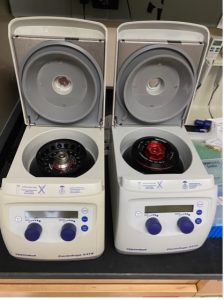Lab 1 Background
Biochemistry
Biochemistry is the study of the chemical and physiological processes in living organisms. The main objective of biochemistry is to understand these processes at the molecular level. A biochemistry laboratory provides a controlled environment in which biochemical research can take place.
Key Safety Requirement
Life threatening injuries can happen in the laboratory. To minimize laboratory accidents, the following safety requirement must be followed:
- Wear eye covering (safety glasses, goggles, or regular glasses); safety glasses provided
- Wear close-toed shoes
- Wear clothing that completely covers your stomach
- Wear lab coat; provided
- Leave all food, beverage, backpacks and coats in the hall lockers
- Immediately report any spills, accidents, or injuries to the teaching team
- Do not leave lit Bunsen burners unattended
- Do not remove any equipment or chemicals from the laboratory
- Do not block access to exits or emergency exits
- Place chemical and biohazardous waste into appropriate waste containers. If not sure, ask a teaching staff.
- Dispose of broken glassware and other sharps (tips are not included) in the broken glass container
The Laboratory Notebook
A laboratory notebook is required for this course. The purpose of a laboratory notebook is for you or anyone else who has a scientific background in your area to understand your experimental procedures and results. A good lab notebook is important for experimental troubleshooting and for you to write lab reports.
A lab notebook should contain:
- Date of the experiment
- Brief explanation of the purpose of the experiment and your hypothesis (if any)
- Experimental procedures and calculations
- Experimental values and results
Expectations Before Lab
You are expected to complete the following items each week before arriving at the lab:
- Read through the entire lab protocol thoroughly, including viewing any videos.
- Complete the “PreLab Assignment” questions. These are questions found in the lab manual and should be handwritten in your lab notebook.
- Write out an overview or schematics of the laboratory procedures.
- Complete the Prelab Quiz in Canvas.
- Complete any required calculations, or any other planning that is possible before the lab, as outlined in the lab manual. Note that some weeks this may require you to coordinate with your lab partner and/or pod mates before the lab.
Common Laboratory Equipment Used in this Laboratory
Plastic and glass tubes
-Plastic Falcon tubes: usually either 15mL or 50mL; single use; conically shaped bottom; with cap; easy to label; can be centrifuged; can be used to store liquid.
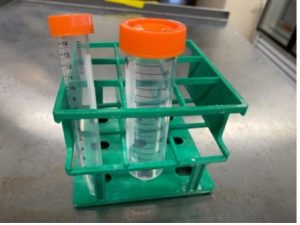
-Glass Wassermann tubes: reusable; round bottom; no cap; cannot be used for long-term liquid storage
-Plastic Eppendorf microcentrifuge tubes (also called Eppendorf tubes or microfuge tubes): usually 1.5mL tubes, but can range from 0.5mL to 5mL; conically shaped bottom; with attached cap; can be centrifuged in a desk-top microcentrifuge
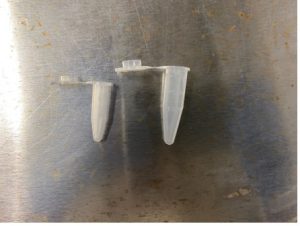
-PCR tubes: 0.2mL or 0.6mL; usually based on a polymerase chain reaction and other enzymatic reactions; conically shaped bottom; with attached cap; compared to Eppendorf tubes, the PCR tubes have thinner walls.
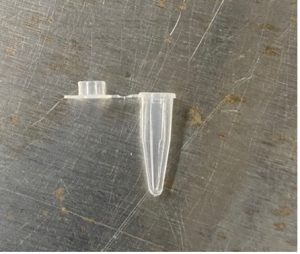
Beakers and flasks
-Beakers: glass or plastic; various sizes; for preparation and short-term storage of liquid
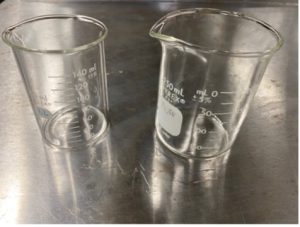
-Erlenmeyer Flasks: most made of glass; various sizes; conical shaped; commonly used for growing bacterial cells and yeast cells
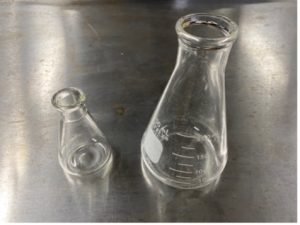
Graduated cylinders
-Used to measure liquid precisely; various sizes and materials
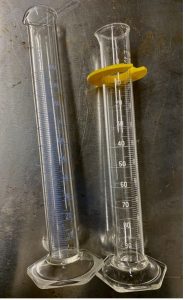
Micropipettes
-Used to accurately transfer a small quantity of volumes, typically ranging from 0.1 μL to 1mL.
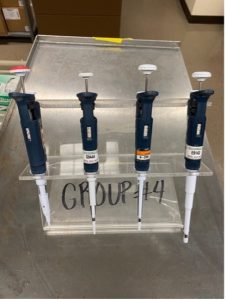
Balance
-Analytical balance: usually has 0.01mg accuracy; can measure from several 0.1mg to several grams; usually has doors to prevent inaccuracy and the dispersion of samples.
-Top-loading balance: usually has 0.1g accuracy; can measure from several grams to several hundred grams.
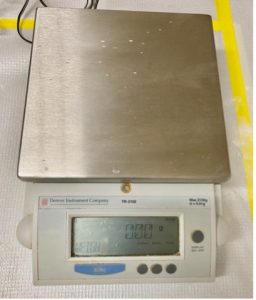
Centrifuge
-Microcentrifuge: desk-top; can be room-temperature or cold; can separate a mixture of liquid and solid and certain liquid with distinct properties by spinning the samples.
-Large centrifuge: similar to microcentrifuge, but can hold more volume (50mL to litres) and usually has higher speed.
